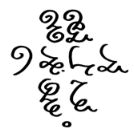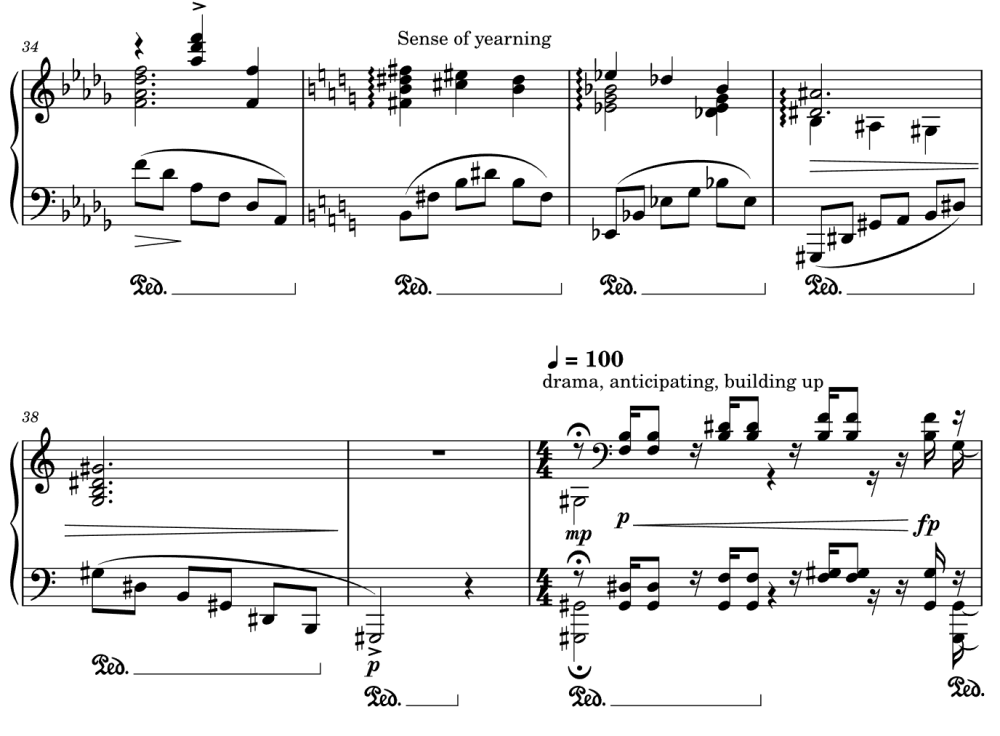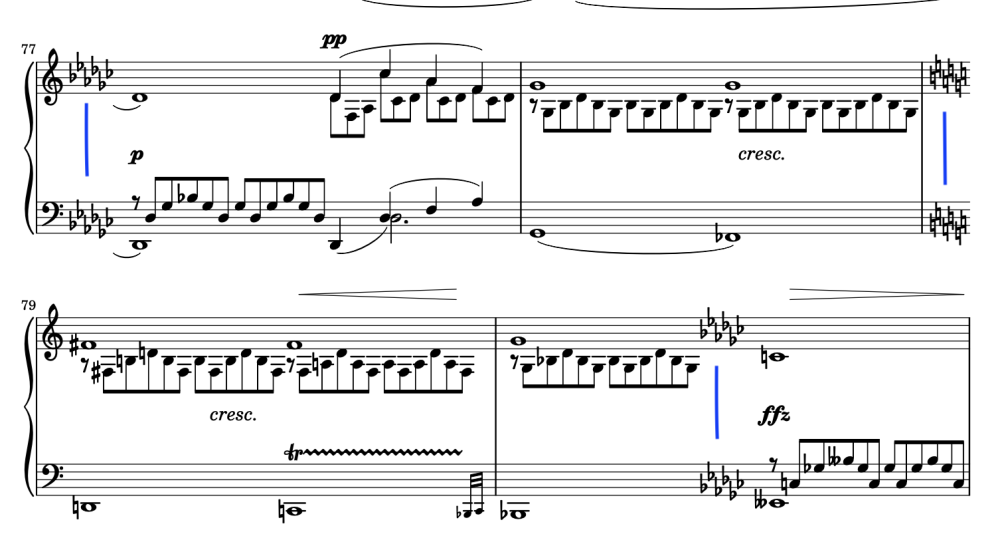All Activity
- Past hour
-
Alex Weidmann started following Sun Glitters Pad improv
-
Hi all. Just wanted to share this experimental composition I made some time ago in GarageBand. Was trying to get away from any idea of structure or form, and make something that sounds quite random. It does have an ostinato, to give the listener something to latch onto; but is otherwise very free. It's probably garbage, but I thought I'd post it anyway.
- Today
-

are these appropriate for children?
Thatguy v2.0 replied to Mooravioli's topic in Piano Music, Solo Keyboard
Hey these are great! It's a bit dissonant and difficult for children imo, but like mentioned, intermediate kids or adults could benefit. I've always thought that if I were ever a composition teacher, this would be something that I would have people write. It's cool to tone your style and writing down to it's more bare bones, and I think it's wonderful to explore. You should write more of these! Nice job at making them all different. The third was my favorite, but I enjoyed them all. Well done! -
Hey there I really like this! It reminds me of Mario 3 for some reason 😄 I like the catchy ideas with rhythm and melody, but it sounds like this is the start to something rather than being a completed piece. You have cool ideas over the static 5/4, but I think the music was ready to move on harmonically. I would explore your rhythm on the V chord (A) or somewhere else and see where that leads your melody writing. You've also set yourself up with some motivic elements, as your theme could be expanded and tweaked. Great start, I'd love to see where this piece goes if you decide to elaborate your ideas. Well done!
- 1 reply
-
- 1
-

-
Yes, I am a percussionist Anyways, this piece is not really as programmatic as my other pieces, but it follows the idea that the first movement starts as an initial idea for battle 2nd movement starts as a planning phase. The 3rd movement is a waltz for the dynasty. (the opposite side of the revolt.) and finally, the fourth movement is kind of a March into war
-
Are you a percussionist? Great percussion effects! A very interesting work ... although the motifs are recurrent - I didn't find it repetitive at all. The work's driving nature swept me along. You mentioned program notes ... I didn't see any on the link. I feel a narrative of the struggle in this "revolt" should accompany the composition ... as it is a programmatic work. Did you imagine different sections reflecting different actions? Mark
-

Share your favorite Mashups!
Henry Ng Tsz Kiu replied to .Em.'s topic in Music Appreciation: Suggest Works or Articles
The 3rd movement of my Violin Sonata which I will publish lol- 11 replies
-
- youtube videos
- favorite
-
(and 1 more)
Tagged with:
-
.thumb.png.8b5b433a341551e913a34392660bc95b.png)
Share your favorite Mashups!
PeterthePapercomPoser replied to .Em.'s topic in Music Appreciation: Suggest Works or Articles
I found a mash-up of jazz standard "Take Five" and the Chocobo theme from Final Fantasy games! This is actually in FFVII:- 11 replies
-
- 1
-

-
- youtube videos
- favorite
-
(and 1 more)
Tagged with:
- Yesterday
-
Henry Ng Tsz Kiu started following Dance in D major
-
PeterthePapercomPoser started following Dance in D major
-
Alant started following Dance in D major
-
Any and all feedback is appreciated, including if there’s a more appropriate title than “dance”. The performance is automated with the Flat app
-
Alex Weidmann started following Joke in A-flat major
-
Joke in A-flat major
Alex Weidmann replied to Henry Ng Tsz Kiu's topic in Piano Music, Solo Keyboard
The ending is pretty weird; but it definitely made me laugh! (So lived up to the title.) Hope you're fully recovered from your recent illness Henry. Sending good wishes, Alex -

are these appropriate for children?
Mooravioli replied to Mooravioli's topic in Piano Music, Solo Keyboard
Hello Aw Ke, Thank you so much for your sub, brotha. Happy you are supporting my new channel. I definitely agree with both of your points, there are quite a few unmanageable chords in the third piece, especially for children. I'll try to simplify it more when I get it performed by other ppl, though, to me, it seems a little strange to have the Ossia be a simplified version of the original. Should I correct the original and have the Ossia be the harder version? -
Linrz joined the community
-

are these appropriate for children?
Mooravioli replied to Mooravioli's topic in Piano Music, Solo Keyboard
Hello Alex, Thank you truly, I am so glad you enjoyed the pieces. Ravel is definitely one of my favourite composers so it isn't surprising his harmonic language influenced me. stay tuned for more works. -
An Old Piece...
latebeethoven_addict replied to latebeethoven_addict's topic in Piano Music, Solo Keyboard
Thanks so much for the comments! It's almost been one year... haven't had much time to compose but I did work on a few more piano works and one orchestral one actually - will take note of this as I compose! -
PeterthePapercomPoser started following Topple the dynasty
-
Henry Ng Tsz Kiu started following Topple the dynasty and Fughetta in C-sharp minor.
-
Fruit hunter started following Topple the dynasty
-
The score is provided along with a score and audio video along with the Muse score. Link for those who want to see program notes. “ some are more effortlessly get recognized then others ”. “ it’sjust not a skills thing. It’s a luck thing.” From true experience, some people are somehow treated betterthan others whether if it’s from environmental factors, the wholeidea about pretty privilege where some people could effortlesslyget what they want while others have to fight for what they need Now imagine a world where the bottom of the the pyramid fightsand topples the top some may say “ revolution” (Tl;dr, revolution,basically revolution) https://musescore.com/user/53049012/scores/25123696
-
PeterthePapercomPoser started following Fughetta in C-sharp minor.
- Last week
-
A revisited, revamped and restored version of a little fugue I first composed back in mid December 2019. Given I had only started composing a few months prior to that point, this one was previously riddled with contrapuntal flaws and mistakes of all sorts, the vast majority of which have all hopefully been fully corrected or at least starkly mitigated after this revision. Enjoy! YouTube video link:
-
Do you mean adding something with the slow style of the beginning to the other two segments of the piece?
-

Orchestral Overture in C-sharp minor.
Ivan1791 replied to Fugax Contrapunctus's topic in Orchestral and Large Ensemble
Thanks for the reference. What did happen here though? 😶 -
Hello This is an interesting question. I think that whenever a piece is tonal, or has those roots, you have to specify tonalities in the armature. Whether they are all put in every time you modulate may be a matter of style. In baroque they didn't use to change the key signature with modulations. In romanticism it seems to be the norm. I think that leaving the score without any key signature is for atonal works, where all accidentals must be indicated. In your work, which by the way is very good, there are moments that can be expressed in another way. For example here. That mix of measures with sharps and flats is a bit strange and I also think that for a pianist it can be confusing. I would have continued with flats in bar 35, writing this bar, and bar 37 as Cb (which, yes, exists too). And in measure 39 place a key signature for Ab. What sounds there is an Ab6, or a G#6 (although in this case the F natural should be written as an E#). Anyway, you can see everything... I've always been amazed at what Schubert wrote in this piece. He already uses a strange time signature. The whole piece is in Gb except for a bar and a half towards the end where he breaks the whole key signature and puts there chords like D, D7/C, Gm/Bb... and resets the original key signature...
-
Where you have a key change that only lasts one or two bars, I think the usual practice is not to change key signature. When the harmony is free roaming, it's quite common these days to have the whole piece in a neutral key (i.e. no key signature). That would also apply to atonal works, or those with no clear tonal centre. When there's a recognisable chord for a particular key, then you should use the enharmonic spelling for that key. (But you seem to have done this already in your work.)
-
Beyond simple general use of sharps flats and double sharps and flats, how do we decide which direction to go ( like go more sharps or flats on the circle or fifths) or is there a more underlying principal to this. I currently have the below score, would like to know how should I notate the score for parts: - that are not in a clearly stated key - are mor more less in a key but they only last one/two bar(s), should I put key signature or just all the necessary accidentals? - to make it consistent with the above options, for parts that are more or less in a certain key for over 4 bars, do I take away the key signature, maintaining the exact notes via accidentals? https://musescore.com/user/62605720/scores/25131706?from=notification#comment-9314725 I'm asking cos a simple google and Ai search doesn't quite address my concerns above, and have not converted it into a vid to be posted elsewhere. ( ofc the scherzo thing is another thing but not my main concern here, maybe ill ask abt that later on in another post) Thanks very much!
-
Hi @Alant! I like your revised version more than the original, with more variation making it more interesting and unleashing more potential, sharing @user011235's thoughts. I thought it might be better if this version (which can sound a little more harsh than the original) can have the tenderness from the first combined/weaved into here - wld there be a gd way for this you might consider?
-
are these appropriate for children?
Aw Ke Shen replied to Mooravioli's topic in Piano Music, Solo Keyboard
Hi @Mooravioli, I think these are good pieces for learning and practicing children and young adults. especially for younger children/early beginners, maybe there can be an even easier version: - physically (and maybe even in terms of sight reading), by simplifying the ornaments, chords and thickness of chords - or have the optional parts/notes marked out, so that players who cant reach some notes still can play with ease without them or with more reachable alternatives. Liked the pieces and subbed to your channel in YT! -
are these appropriate for children?
Alex Weidmann replied to Mooravioli's topic in Piano Music, Solo Keyboard
Hi Mooravioli, I really enjoy your harmonic language in these works. It sounds quite jazzy and reminds me of Ravel at times. -
Toan Luu joined the community




